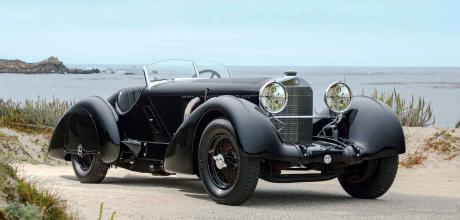1930 Mercedes-Benz SSK Count Trossi W06
The streamlined Count Trossi W06 SSK is one of the most fabled of 1930s Mercedes-Benzes.Massimo Delbo delves into its fascinating history.
Photography Evan Klein
BACK IN BLACK COUNT TROSSI MERCEDES
Unravelling the history of a streamlined stunner
It’s 4.30am on the Saturday before the Pebble Beach Concours. I’m too excited to sleep as my mind is already at the truck lot where, in 90 minutes, I’m due to come face to face with one of the most beautiful, mysterious and fabled cars in the world. It will not be the first time, and that makes my feverishness all the more intense: my senses have already been kidnapped by the shape and history of the 1930 Mercedes-Benz SSK ‘Count Trossi’ W06. The lack of sleep and the early start will soon be entirely forgotten, and I shake off the doziness by reminding myself of the Count Trossi story.

The car’s history is somewhat complicated, especially that of its formative years. Chassis 36038, paired with in Varese engine 77644, was manufactured without having been ordered by a specific owner, and was shipped in February 1930 to the Tokyo Mercedes-Benz dealership. After languishing unsold, it was returned to Stuttgart in the September to be refurbished and then, a month later, the rolling chassis was shipped to Carlo Saporiti Auto Garage in Milan, Italy. On 27 December it was sold to Antonio ‘Tonino’ Maino, a resident of Somma Lombardo county. He had paid Lire 160,000 to become its first owner. To give you an idea of the value of that kind of money, in 1939 a popular Italian song described a Odream income of Lire1000 per month to be able to afford a house, a nice car and a young and beautiful wife...
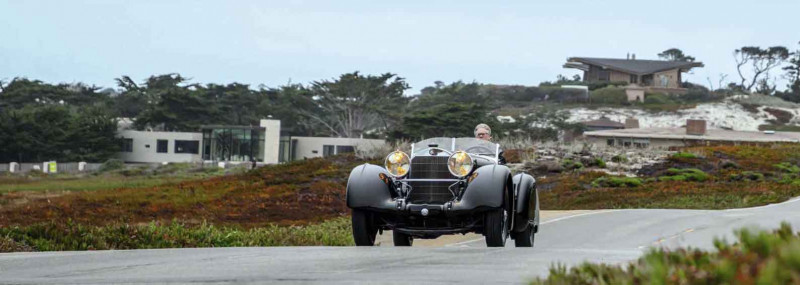
The two-month gap between the arrival in Italy of the rolling chassis and its delivery to the new owner is explained in the registration documents, which state that the chassis was fitted with a two-seater spyder body, later discovered to be by Carrozzeria Touring of Milan. Touring was the most exclusive coachbuilder of the period, and employed a sketch image of the car — a white two-seater sports body with cycle fenders but no doors — to advertise the company in the January and February 1931 issues of Auto Italiana.
It then began a career in competition. On 11 April 1931 the SSK left Brescia to race in the Mille Miglia, driven by Maino with Ermenigildo Strazza, but soon retired with a blown head gasket. Having been repaired, on 24 May the SSK was entered in the Gran Premio d’Italia at Monza by Strazza, who went on to buy and register the car in June. He paid Lire50,000 for it and straight away entered the Pontedecimo-Giovi hillclimb, finishing eighth in class.
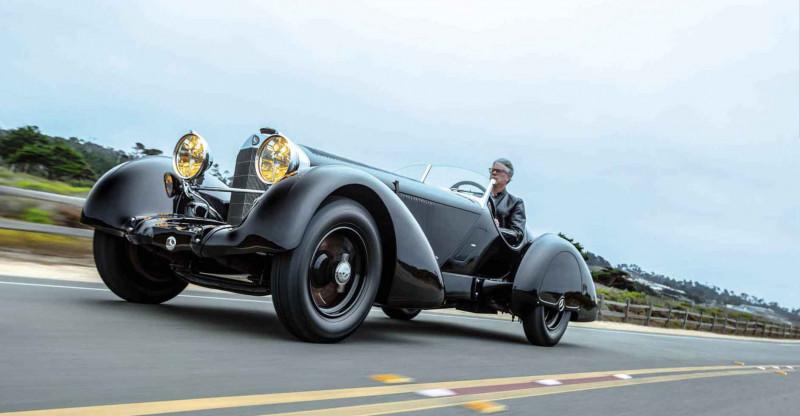
In the same race, behind the wheel of a black Mercedes 88 (chassis 35944), was Count Carlo Felice ‘Didi’ Trossi, a refined and educated gentleman with a deep passion for cars, motorcycles, boats, aeroplanes and watches. He was a talented racing driver and one of the wealthiest people in Italy. Bom in 1908, he grew up at his family’s 14th Century castle in Gaglianico, close to Biella, between Milan and Turin. The Trossis’ financial interests ranged from property to banking, industry to politics. The young Didi added mechanics and racing passion.
‘When I was assigned to research the history of the SSK in 2007, I already knew Count Trossis name, but this car afforded me the opportunity to discover more about this talented and skilled individual,’ says historian Adolfo Orsi. I found that in his early 20s he was the owner, among much else, of two Mercedes Compressors at the same time, something previously unheard of due to the value of these cars.’
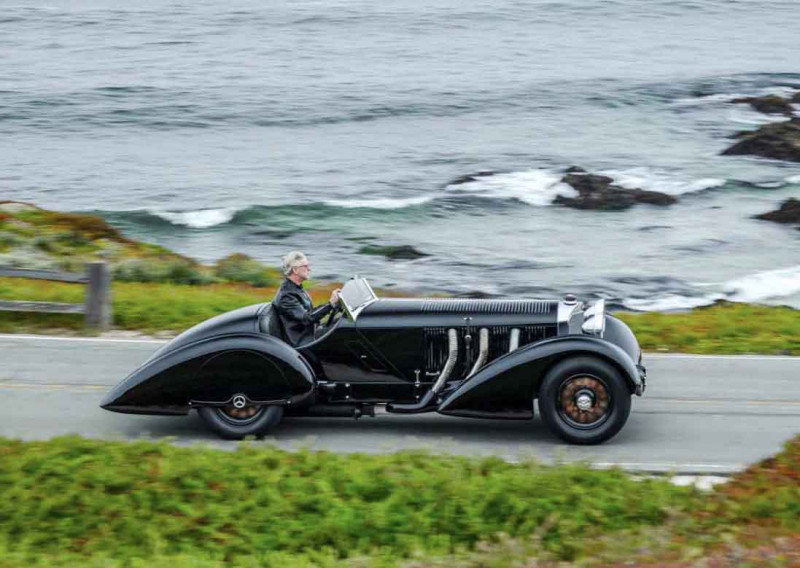
To better understand the man, it is worth exploring some of his important contributions to the motoring world. Trossi was fundamental in the founding of Scuderia Ferrari, of which he was president from 1932 until 1934, and was responsible for Enzo Ferrari’s passion for 12-cylinder engines: the ‘American 12-cylinder car’ often referred to by Ferrari was Trossis 1937 Packard Twelve. Trossi backed Battista ‘Pinin’ Farina when establishing his own carrozzeria, and in post-war Italy suggested to Piaggio the idea of producing a scooter using as a template what he had built himself in his hangar with aircraft spares. The result was the incomparable Vespa. The hangar, just yards from the castle, is where Trossi stored his two twin-engined aircraft and where a full team of technicians worked on them.
On 5 July 1931, the XII Susa-Moncenisio hillclimb saw Strazza win the over-3.0-litre Sport category just four days before he sold the SSK. Trossi made his debut in it at the VIII Aosta-Gran San Bernardo hillclimb on 9 August, finishing fourth in class. His next race, on 24 March 1932, was the La Turbie hillclimb in France, in which he finished second in class. In the following July, Trossi sold the SSK for Lire80,000 to Angelo Bozzi, who raced it in the Sassi Superga on 26 June, finishing fifth in class. During his ownership the car competed in several Italian races, always driven by Domenico Jovanella, who ended up buying it for Lire90,000 on 21 November.

Then came another hillclimb in May 1933 and, on 21 June, the car was bought back by Count Trossi. A history like that would surely be enough to guarantee immortality for many a noted car, almost all of it discovered by Adolfo Orsi long after the SSK had become a Pebble Beach and Villa d’Este Best of Show winner. Indeed, for many years, even after it had entered the Ralph Lauren collection in 1988, very little was known about the car’s early history, or how, when, or by whom it was transformed into the unique piece that is today. All the above was merely a footnote in the story of Trossis SSK, which really began in 1934.
Dated 19 January that year is a sketch of a streamlined closed body, similar in general appearance to what would become known as the ‘Count Trossi SSK’, signed by a certain Willy White, a name unknown in the car world. Could ‘Willy White’ have been an anglicisation of Felice Bianchi Anderloni, the founder of Carrozzeria Touring? Perhaps not. It was by a stroke of luck that, several years after Orsi’s research and while I was in Biella preparing a story for Octane on the Monte Carlo Rallywinning Lancia Stratos, I was directed to a gentleman in Umbria. He was a direct descendant of Willy White, who turned out have been an American engineer who had moved to Italy to maintain the American-built machines used in the factory of the Trossi family and who was often asked to take care of racing cars and ’planes, too.
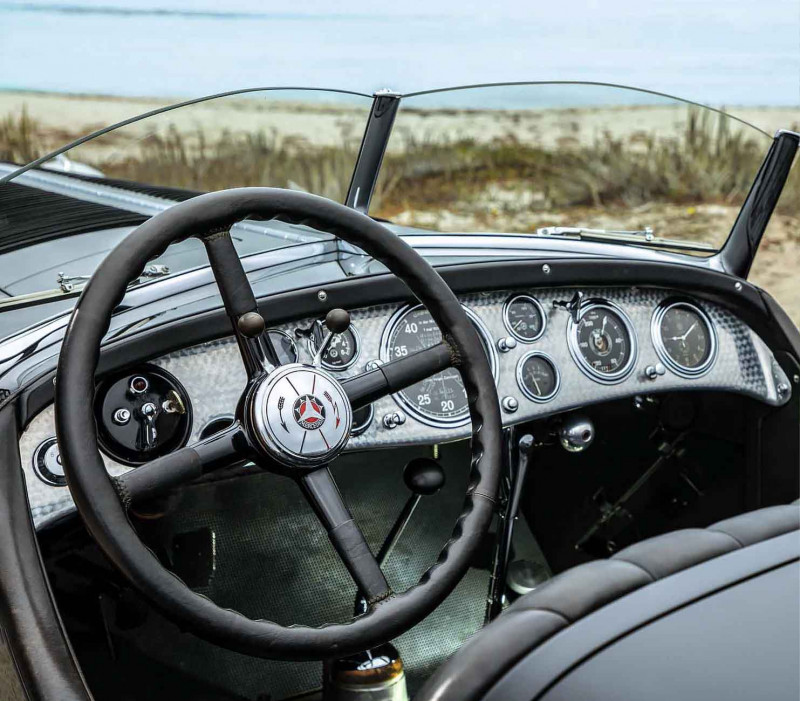
Cockpit is compact and stark rather than plush, yet features a beautiful turned aluminium dashboard.
There is another sketch, drawn by Trossi himself, resembling what would become the SSK’s new body, and perhaps even more significant, a picture taken on 20 May 1934. It shows Enzo Ferrari and Didi Trossi observing Guy Moll in a Scuderia Ferrari Alfa Romeo Type B/P3 single-seater, testing aerodynamic solutions on the highway between Milan and Varese. These aerodynamic aids were the work of engineer Cesare Pallavicino, and helped score a victory at the Avus GP just a week later. The Alfa’s fenders clearly resemble those adopted by the Trossi SSK, a trademark of its new body, inspired by the 1929 Curtiss P6 Hawk biplane.
The first recorded appearance of Count Trossi with the rebodied SSK is dated 22 July 1934, at the Coppa Ciano races near Livorno. Trossi was there to compete in an Alfa Romeo — but the only known picture of him with the rebodied SSK was taken that day in front of Villa Trossi Uberti. And despite all the work that had gone into its radical body — seemingly at Trossi’s own request and by his family’s employee — not to mention his prior race history and ownership of the car, he kept it only until April 1936.
Trossi sold the SSK to a Giuseppe Vaccaro who, just a day later, moved it on to Eliseo Linuzzi, an officer of Rome’s traffic police. Little is known of the car during the war years but a recent letter from a descendant states that a gentleman called Levi Samana, of Florence, owned the car before World War Two, but couldn’t register it in his name because Italian law at that time made it illegal for Jewish people to own anything.
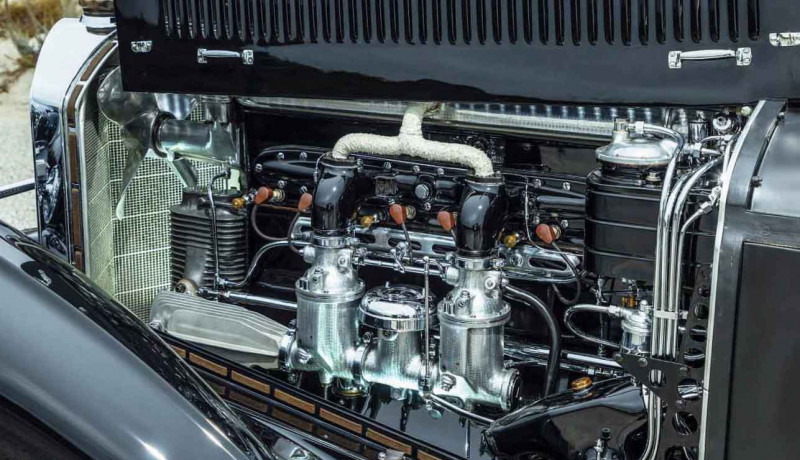
After the war, in 1946 and 1947, the SSK was raced in central Italy by Eliseo Linuzzi. In 1950 it was bought by the Argentinian Ambassador Ricardo Alfredo Polledo, but his country’s import legislation meant he couldn’t take it to his homeland, so in 1952 he sold it to specialist Manhattan car trader Charlie Stitch. In 1954 it was sold to US-based Carter Schaub and its story appeared in the September 1959 issue of Road & Track, featuring a list of Trossi’s modifications.
In 1963, Raymond Jones of Michigan bought the SSK and put it to use as a family car. His wife Helena wrote in 2011 of when she’d visited a cousin in a nearby city in the SSK and became stranded when (unbeknown to her) their six-year-old son had shut off the fuel pump. In 1975, the family — including nine children — moved to Mentone, France, and the SSK went with them.
‘I remember the car very well,’ says Greg Jones, Ray’s son. ‘I spent many childhood hours playing in it with my siblings. The car was far from perfect but we used it for journeys in southern France. At that point in her life she was in a mixture of conditions, partially reworked in some parts, still original in others.’
In 1978, the British collector Anthony (now Lord) Bamford bought the car, reselling in 1980 to US-based Thomas Perkins. Finally, in 1988 it entered the Ralph Lauren collection and has remained there ever since. After being restored by Paul Russell, the SSK went on to win several major awards, not least Best of Show trophies at Pebble Beach in 1993, Villa d’Este in 2007 and the Goodwood Cartier Style et Luxe in 2008.
Much has been discovered about the SSK’s history in recent years yet there are still many unanswered questions about it, not least the exact details of who manufactured that radical new body in 1934. And there is no definite answer to this question, at least not yet, though evidence increasingly indicates that it was the small workshop, close to the Trossi family’s Gaglianico castle and often employed by Count Trossi’s team, that carried out the work.
Today, on the 17-Mile Drive close to Pebble Beach, I can only begin to imagine the impact Trossi’s SSK made on people back in the 1930s, when cars in Italy were still a rarity and, to most, even a Fiat Balilla was a distant dream. It is equipped with an ‘Elephant’ blower, the most powerful type of supercharger Mercedes-Benz had, usually reserved for the works racers, and to hear it screaming along the Pacific coast is a special privilege.
Even so, it’s astonishing to think that this elegant, beautiful car raced in the Mille Miglia, enlisted between Caracciola’s (winner the year before) and Stuck’s cars (the year after), and that it was cherished and transformed by one of the people closest to the Alfa Romeo racing team, often — indeed — a works driver for Scuderia Ferrari.
Next July marks the 90th anniversary of Trossi being photographed with his uniquely re-bodied SSK. My dream is, one day, to see the car back at his family’s castle (the Trossis still own it), looking as it did in 1934. It would make a suitable tribute to one of the most charismatic men that ever lived, and to a car that wrote one of the most intriguing pages in motoring history. It speaks volumes that the paper label for the Trossi SSK’s keys for years sported the simplest note: ‘Black Mercedes’. At this level, there is no need to say too much.
THANKS TO Susanne Lo Pilato, Diane Dutter, Greg Jones, Paul Russell and Adolfo Orsi.
TECHNICAL DATA 1930 Mercedes-Benz SSK Count Trossi W06
- Engine 7065cc OHC straight-six, two updraught carburettors, Roots-type supercharger
- Max Power 240bhp @ 3400rpm (300bhp with supercharger engaged)
- Max Torque 507.5lb ft @ 2000rpm
- Transmission Four-speed manual, rear-wheel drive
- Steering Worm and sector
- Suspension Front: beam axle, leaf springs, lever-arm dampers. Rear: live axle, leaf springs, cockpit-adjustable Siata lever-arm dampers
- Brakes Drums
- Weight 1397kg
- Top speed 147mph (est)
‘TO HEAR IT SCREAMING ALONG THE PACIFIC COAST IS A SPECIAL PRIVILEGE’
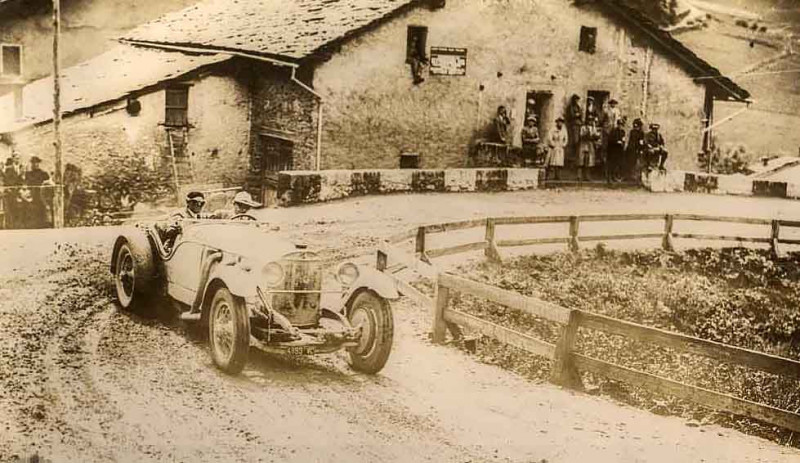
Clockwise, from top left Trossi's debut in the SSK at the 1931 Aosta-Gran San Bernardo Hillclimb; driven rather more sedately on Monterey's 17-Mile Drive; supercharged straight-six is a powerhouse.

Clockwise, from above Once a race-winner, now a concours-winner; the 1934 sketch by Willy White; pictured outside Castello Trossi at Gaglianico; Enzo Ferrari and Trossi observing Guy Moll in Scuderia Ferrari’s influential and experimental Alfa Romeo.
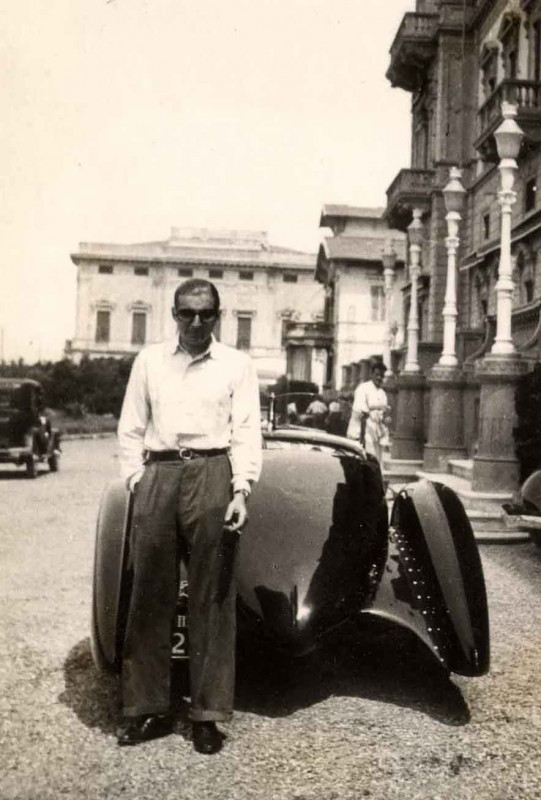
Left and below right Count Trossi and his creation pictured on 22 July 1934 at the Coppa Ciano races near Livorno; today in California — and still a show-stopper.


